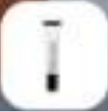If you're relatively new to dog ownership, you might not know a great deal about leads and their functions. Although you will be finding things out quickly as owning and training a dog is not a simple task and requires research. In this article, we help you out by introducing some of the best leashes for dogs.
There is no one size fits all solution when buying a leash for your dog. There are traditional ones that have some benefits as well as drawbacks; then there are ones that focus more on comfort or non-pulling. The best leash for your dog is a process of trial and error, but follow your intuition when reading the list below.
Thunderleash
The thunderleash is one of the most popular dog leashes because of its convenience and performance. The thunderleash attaches easily to your dog's collar then wraps around the dog's torso; it works well because there isn't the same tug at the neck that you find with other collars; instead there is whole body feedback.
The thunderleash fits all breeds and types of dog; the straps can be adapted. The no-pull configuration applies gentle pressure to your dog's torso and provides consistent feedback so you are always in communication with your pet on the move. As an added bonus, there are no complicated harness systems to contend with.
The Head Collar
The head collar was developed by a behaviorist vet to prevent undesirable behaviour like running and lunging during your morning walks. When restricted by a collar, these behaviours can lead to choking and coughing for your dog. The Head Collar wraps around your dog's nose and puts pressure on the back of the head instead of the throat.
The head collar is a popular choice for trainers because it gives them control and doesn't restrict the dog's movement too much; it isn't uncomfortable to wear either and offers the trainer some added sensitivity when commanding the dog. If you want a collar that's accommodating and pragmatic, choose the head collar.
No Pull Harness
Traditionally, dog leads are clipped onto the dog's collar and tug at the neck; these days, things are pretty different. Different owners and different dogs have their preferences, and there are plenty of options to choose from in today's marketplace. But there are no-pull harnesses that give you an alternative to the traditional lead. These are easy and comfortable.
The no-pull harness fits around your dog's torso and has a clip in the back where a leash can attach. Unlike a conventional collar lead, the no-pull harness goes nowhere near the neck. This lead doesn't offer as much control and is probably better for already trained dog's.
Padded Leash
If comfort is your top priority when it comes to walking with your dog, you definitely want a padded leash. Dogs might feel the discomfort of the pulling and tugging of a leash at the collar, but they can also gain discomfort from the chafing of the collar. Eliminate these two aspects, and you have the perfect leash.
If this sounds ideal, the padded leash is the one you need. This leash sits somewhere between the no-pull harness and the Thurderleash. It wraps around the neck of your dog like a harness, but it uses a soft mesh padding for added comfort. The lead also clips onto the back to prevent neck tugging.
Short Dog Leash
While some people like a harness or a head leash to balance control and autonomy, others prefer a short leash. A short leash also prevents excessive tugging and gives more control to the owners or trainer. The short dog leash also has a padded handle for extra comfort and protection.
When using a short lead for your dog, it means you can easily let them go, and they won't be bothered by a wandering leash. When they return, you can quickly take back control as you walk. The short leash is great for long walks because of this freedom and the padded handle.
Zero Shock Leash
It's very important to reduce the tug on your dog's neck as it's uncomfortable and can be damaging to the throat and neck. At the same time, you need to command the dog in certain ways, so there needs to be some restraint. Most modern collars find some way of striking a good balance; the zero shock collar is a prime example.
The zero shock collar uses a stretchy shock resistant material to reduce the effects of pulling and tugging. It also has extra padding around the neck. This collar is more traditional in its design, going around the neck, but the stretchy leash gives it a more modern appeal.
Classic Dog Leash
Although there is a movement away from traditional dog leashes in favour of one's that are padded or non pull, there are still those who like a classic dog leash. These are leads that clip onto your dog's collar; they are usually a bit longer but also made from nylon and quite tough.
A classic lead doesn't have any of the fancy padding or extension capabilities. Your dog will feel the tugging at its neck and will have a restricted area of movement. Still, these collars are useful for short and long walks, they are detachable so your dog can easily run around, and they are machine washable.
The Bungee Lead
The perfect balance between the classic lead and the short lead is the bungee lead. This is a harness with an extendable lead that you control from a handle, a convenient button stops and starts the lead allowing your dog to run on or come back. This lead offers excellent flexibility and control.
This lead is made from tough nylon, so it's chew resistant, perfect for those dogs that like to get their teeth into the cord and try to escape. The Bungee lead dynamic gives your dog maximum freedom without choking her but still gives you plenty of control.
Summary
Often the lead you choose for your dog depends on the type of dog you own and your personal preferences. There is a trend these days towards no-pull harnesses and leads that reduce tugging and discomfort. On the other hand, trainers might prefer a shorter lead with a bit more sensitivity; consider the overall function of the lead when making your choice.



